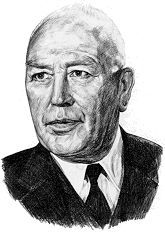|
|
|
 |
|
Inductees
C. C. (Carl) Agar
Raymond Collishaw
W.W. Gibson
Sheldon Luck
Jim Spilsbury
DeHavilland Beaver
Contact Us |
 Born at Nanaimo, British Columbia, on November 22, 1893, Raymond Collishaw spent his life looking for adventure. While still a teenager. he sailed as second mate aboard a tramp steamer, and in 1911 served with the famous British explorer R.F. Scott in the Antarctic.
At the outbreak of war, he transferred from the Fishery
Protection Service to the British Royal Naval Service.
The only way a young man could be accepted as a pilot
at this early stage of the war was to train at his own
expense and Collishaw learned to fly at the Curtiss
Flying School in Toronto.
With the enemy falling. back in all areas, Collishaw was
withdrawn from the Front and, like Bishop, sent home to
plan the foundations for a Royal Canadian Air Force.<
By the end of WWI, Collishaw s was credited with 60
aircraft shotdown. On October 1. 1918, at the age of 25
he was promoted to lieutenant colonel.
As if being a fighter ace was not enough adventure for
Remaining in the RAP in the 1920s, the Canadian
served aboard an aircraft carrier and later commanded
the air station at Upper Heyford. By 1939, he was posted
to Egypt, in charge of what would become the Desert Air
Force. Although badly outnumbered by Italian and later
German aircraft and considered a sideshow by
politicians in London, the Desert Air Force under his
leadership destroyed some 1,100 enemy aircraft. Made
a Companion of the Order of the Bath, he was brought
home in 1942 and promoted to Air Vice Marshal.
His final command would be 14 Fighter Group in Scotland. When he retired in 1943, Raymond Collishaw remained active in local civil defence organizations throughout the war. After it, he returned to his home province of British Columbia and became a partner in a mining operation. He died on September 9 1976, having lived a life that few had or would ever experience, nearly long enough to celebrate his 93rd birthday Excerpted from Peter Pigott's excellent book 'Flying Canucks - Famous Canadian Aviators' 1994 ,Hounslow Press |